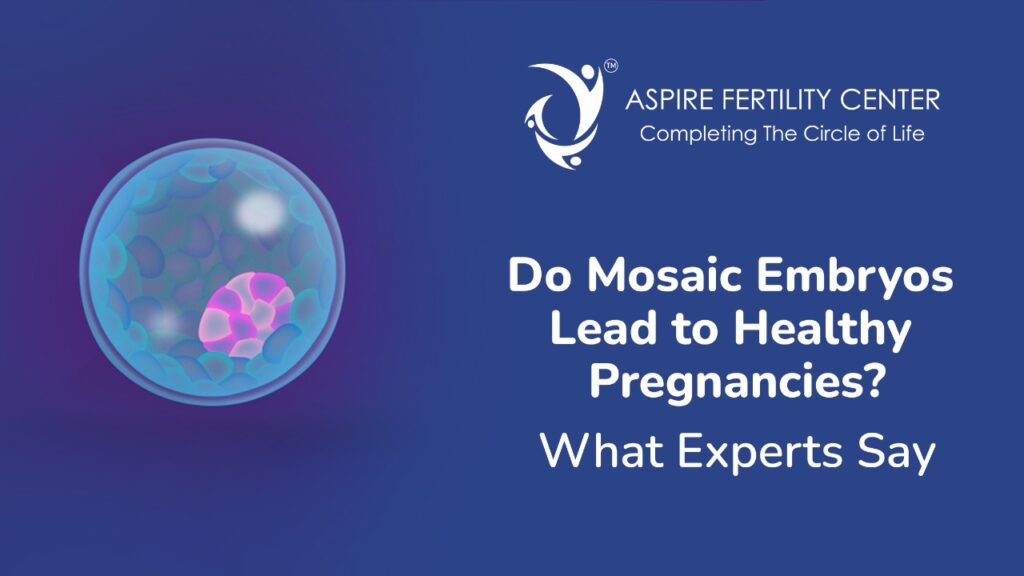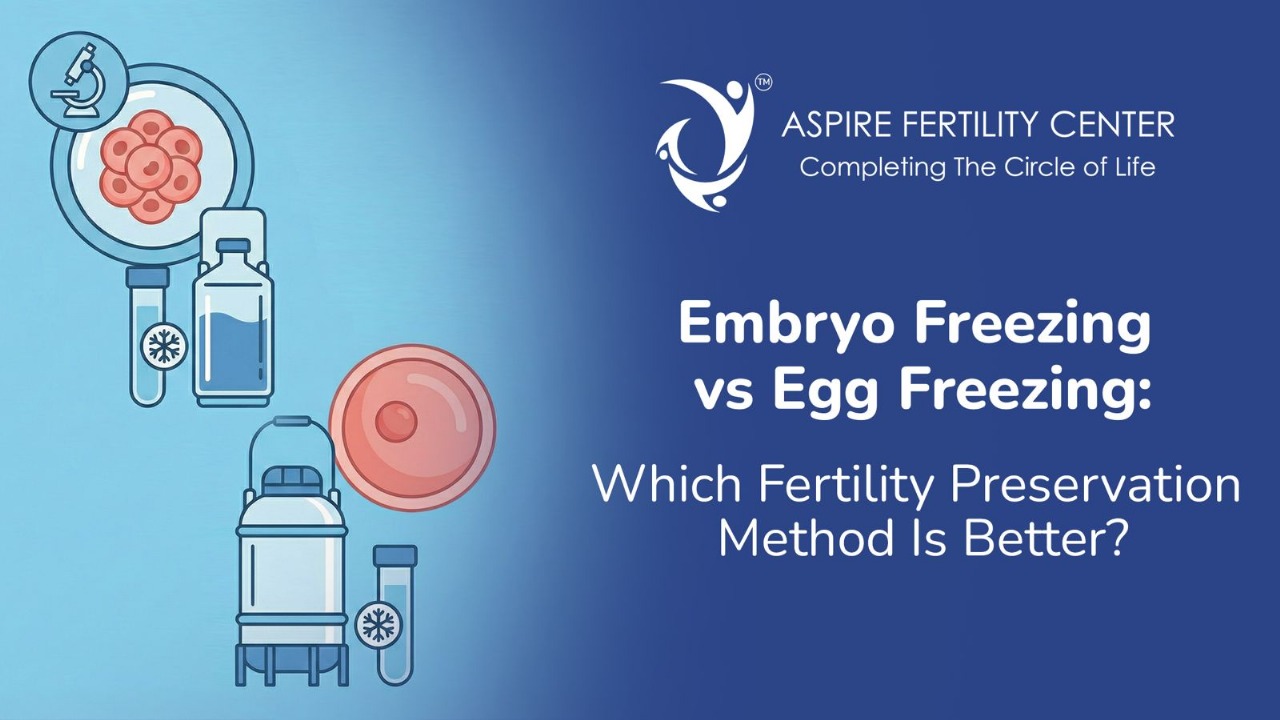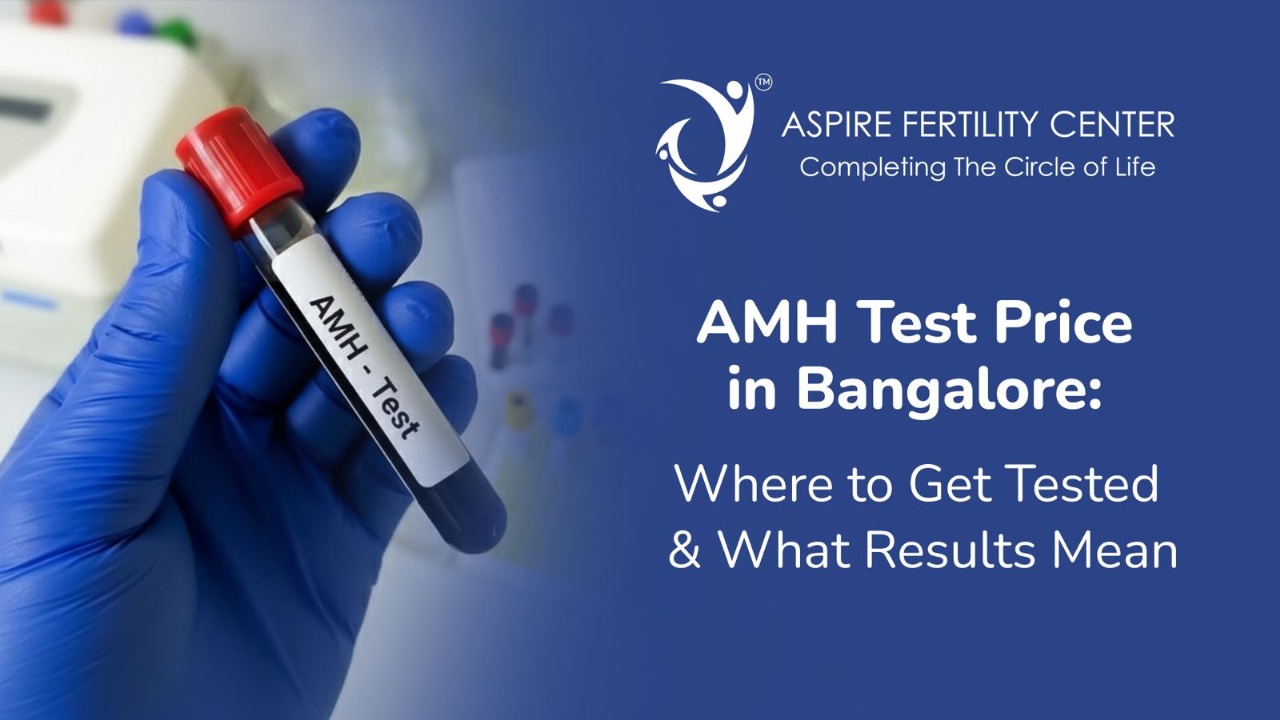
Do Mosaic Embryos Lead to Healthy Pregnancies? What Experts Say - Aspire Fertility, Best ivf centre in bangalore
Mosaicism describes an embryo made up of two different cell types: some cells have the normal number of chromosomes, and some have extra or missing ones. Think of it like a patchwork quilt — most of the fabric may be fine, but a few patches look different. When this happens in an embryo, we call it a mosaic embryo.
In IVF, embryos are sometimes tested with PGT‑A (Preimplantation Genetic Testing for Aneuploidy). The test checks a small sample of cells and shows whether the sample is completely normal (euploid), completely abnormal (aneuploid), or mixed (mosaic). Mosaicism is reported in a portion of tested embryos — it is not rare, and it does not automatically rule out a healthy pregnancy.
How do clinics detect mosaic embryos?
PGT‑A is performed around day 5 or 6 of embryo development, when the embryo is a blastocyst. A few cells are gently taken from the outer layer (the trophectoderm) and sent for DNA testing. Modern sequencing techniques can estimate the proportion of normal and abnormal cells in the biopsy.
It’s important to know that the biopsy samples only a small number of cells. That means the test gives a very useful snapshot, but it isn’t a perfect picture of every single cell inside the embryo. Clinicians use this information along with embryo appearance, patient history, and other factors to make recommendations about embryo transfer.
Are mosaic embryos common?
Mosaicism shows up in a meaningful minority of tested blastocysts. Exact numbers vary between clinics and patient groups, but it’s common enough that fertility specialists have developed clear guidelines for how to proceed when mosaic embryos are identified.
Can mosaic embryos lead to healthy pregnancies?
Yes — many mosaic embryos do. The chances depend on several key points: how many cells are abnormal, which chromosomes are affected, and the overall quality of the embryo. In general, low‑grade mosaic embryos (where a smaller percentage of cells are abnormal) have much better outcomes than high‑grade mosaics.
Clinical experience and research show that low‑grade mosaic embryos can implant and develop into healthy babies. That’s why experts often consider them as viable options — especially for patients who don’t have euploid embryos available. High‑grade mosaics and mosaics involving multiple chromosomes are treated more cautiously because they carry higher risks of miscarriage or developmental issues.
Why mosaic embryos still do well
A few factors explain why a mosaic embryo might still lead to a healthy pregnancy:
- Self‑correction: Some embryos appear to correct themselves as they grow. Abnormal cells may be eliminated or outcompeted by normal cells.
- Placental confinement: In some cases, abnormal cells end up mainly in the placenta rather than the fetus — this can reduce the chance of problems for the baby.
- Small biopsy sample: Due to the limited number of testing samples, the biopsy might exaggerate the amount of abnormal cells present in the entire embryo.
What experts recommend before transfer
When teams decide whether to transfer a mosaic embryo, they consider:
- Priority of euploid embryos: If you have euploid embryos, those are typically recommended first.
- Grade of mosaicism: Low‑grade mosaics are more often considered for transfer than high‑grade mosaics.
- Which chromosomes are involved: Some chromosomal changes carry higher risks than others.
- Your individual situation: Age, prior IVF results, and personal preferences all matter.
Experts often suggest a single‑embryo transfer for mosaics to reduce multiple pregnancy risks, followed by careful prenatal monitoring if the embryo implants.
Emotional and practical considerations
Finding out your embryo is mosaic can be stressful. Couples often feel anxious or confused about what to do next. Open, compassionate conversations with your fertility specialist and genetic counselor help patients weigh the potential benefits and risks. Many people find reassurance in understanding the data and the steps that will be taken to monitor pregnancy closely.
After a mosaic embryo transfer: what to expect
If you and your team choose to transfer a mosaic embryo, your pregnancy care plan is likely to be more proactive:
- Early ultrasound checks to confirm healthy implantation and growth
- Genetic counseling to explain possible outcomes and testing options
- Non‑invasive prenatal testing (NIPT) and, if indicated, diagnostic tests such as amniocentesis
- Closer obstetric monitoring throughout pregnancy
These steps help detect any issues early and give you the best chance of a healthy outcome.
Practical tips for patients
- Ask for a clear explanation of the mosaic report: what percentage of cells, which chromosome(s), and how the lab defines low vs. high grade.
- Discuss embryo ranking with your clinician (euploid first, then low‑grade mosaic).
- Consider single‑embryo transfer to reduce risks from multiple pregnancies.
Plan for prenatal screening and counseling after a mosaic transfer.
Ready to begin your fertility journey? Schedule a consultation with our expert team at Aspire Fertility Center today. Our founder and clinical director brings extensive expertise in reproductive medicine, ensuring you receive accurate testing and compassionate care throughout your evaluation process.
Contact Aspire Fertility Center:
📞 Helpline: 080-42121313
📞 Direct Lines: 9620004610 or 9620006410
📧 Email: info@aspirefertility.in
Visit Our Convenient Locations:
HSR Layout Clinic:
No 2, 19th Main, 4th Sector, HSR Layout, Bangalore 560102
Sarjapur-Marathahalli Clinic:
4th Floor, Within NATUS Hospital, 20/13, Sarjapur-Marathahalli Rd, Carmelaram, Janatha Colony, Doddakannelli, Bengaluru, Karnataka 560035
Infertility Treatment Options in Bangalore: What’s Right for You?
Top 5 Qualities to Look for in the Best Fertility Doctor in Bangalore
FAQs
Q1: What is embryo mosaicism and how common is it?
A1: Embryo mosaicism refers to a condition in which an embryo contains a mixture of both normal and abnormal cells. It appears in a notable portion of embryos tested during IVF, and the exact frequency can vary by clinic and patient age.
Q2: Can transfer of a mosaic embryo result in a healthy baby?
A2: Yes. Many low‑grade mosaic embryos have led to healthy pregnancies and live births. The odds are generally lower than for euploid embryos but are still meaningful.
Q3: How does PGT‑A detect mosaicism before embryo transfer?
A3: PGT‑A tests a small group of cells from the outer layer of the blastocyst using DNA sequencing. The result estimates how many cells are normal versus abnormal and labels the embryo as euploid, aneuploid, or mosaic.
Q4: Should I transfer a high‑grade mosaic embryo?
A4: High‑grade mosaics have higher risks and are usually considered only after euploid and low‑grade mosaics, particularly if you have limited embryos. Discuss the specifics with your fertility team.
Q5: How will knowing about mosaicism affect my IVF plan and embryo transfer choices?
A5: Learning an embryo is mosaic changes planning: it informs which embryos are prioritized, whether single‑embryo transfer is recommended, and what prenatal monitoring will be advised.





